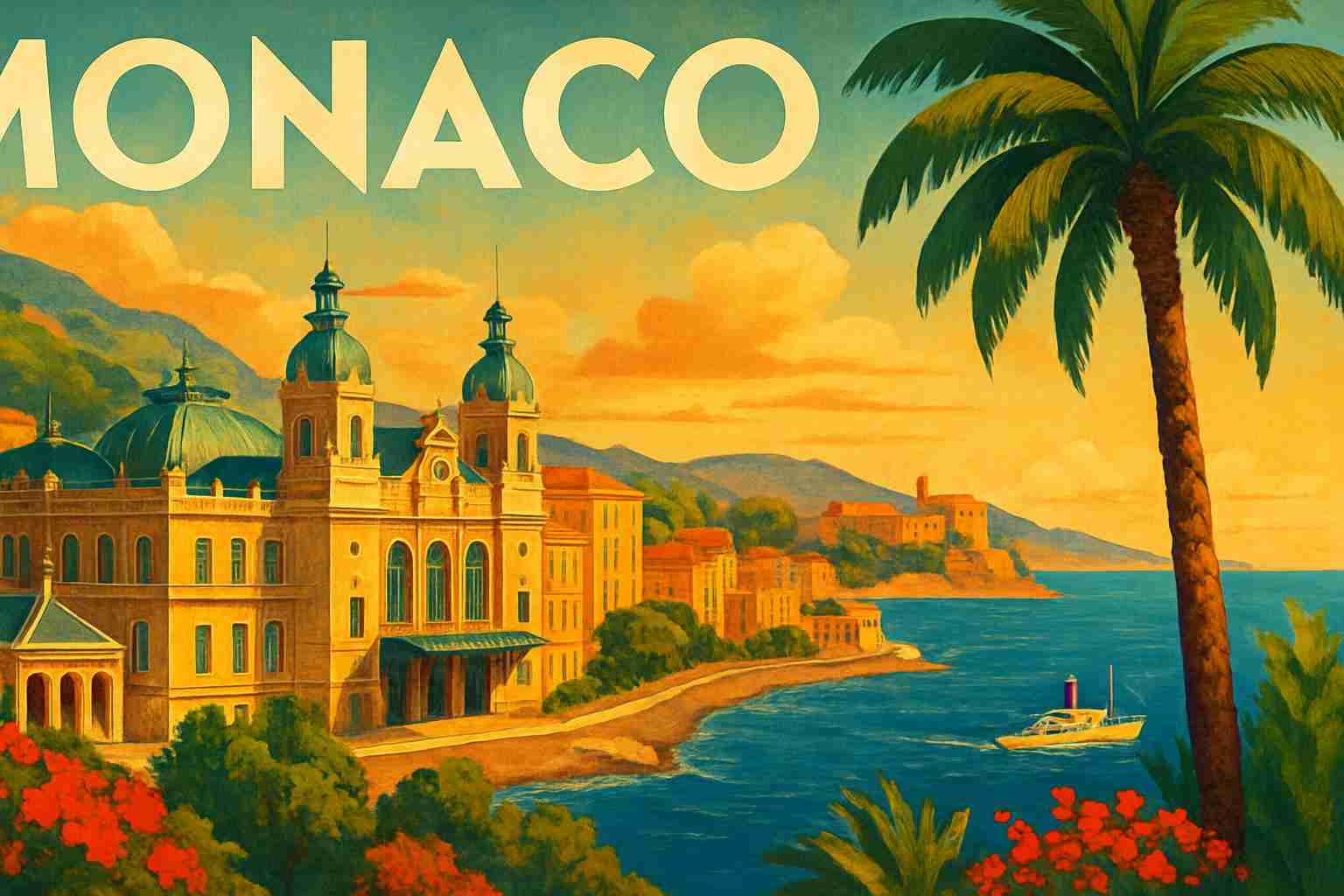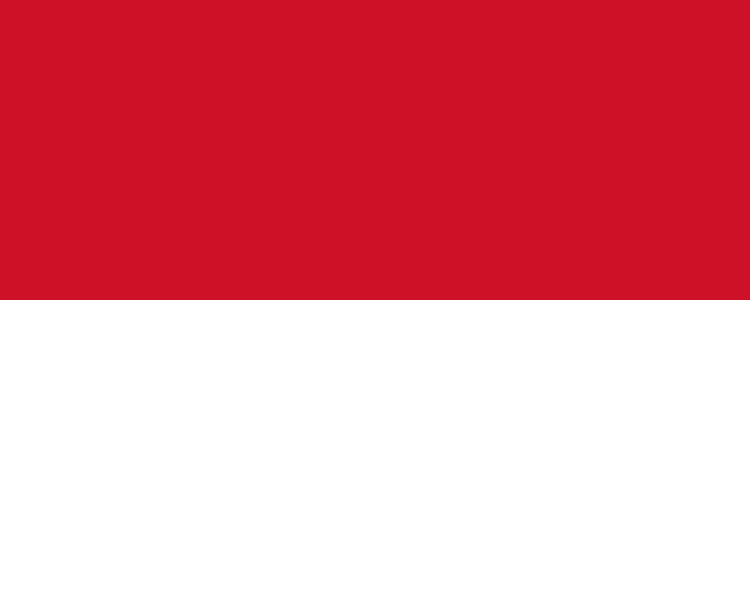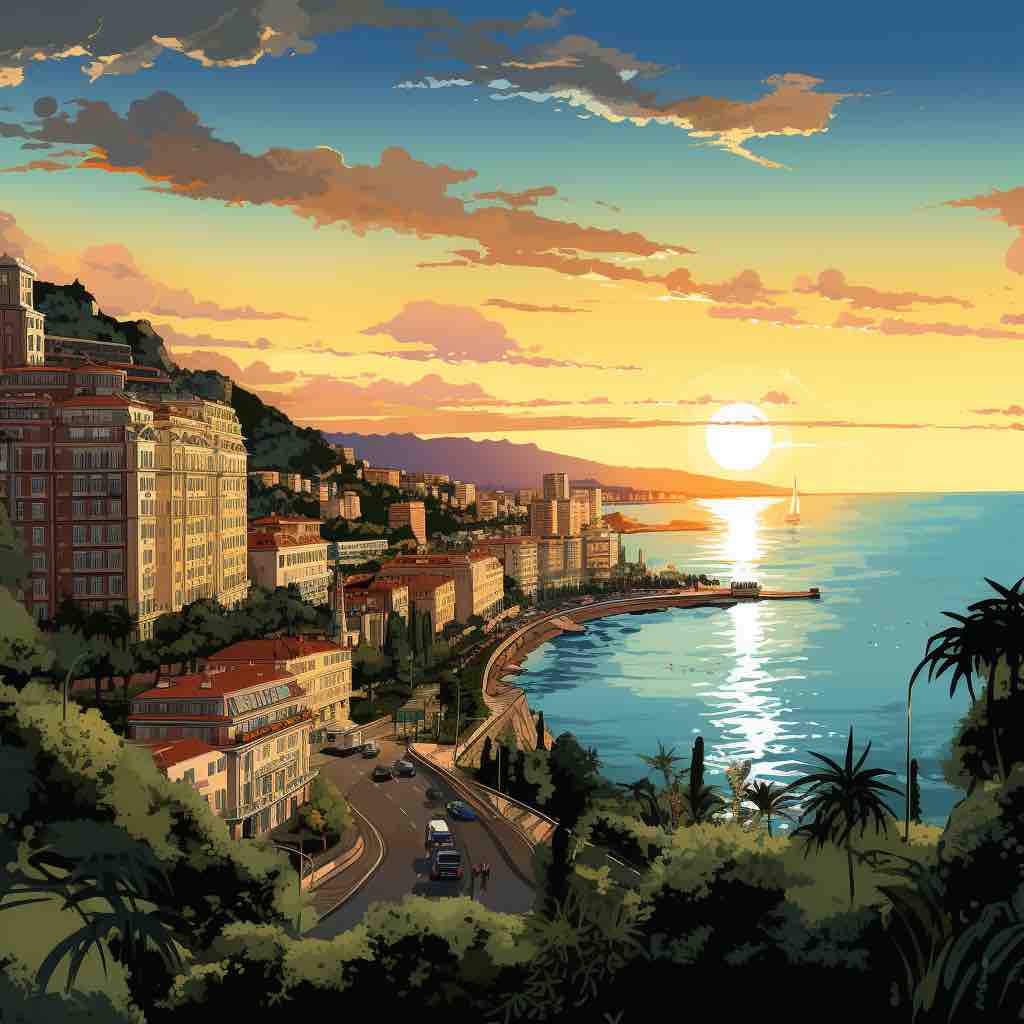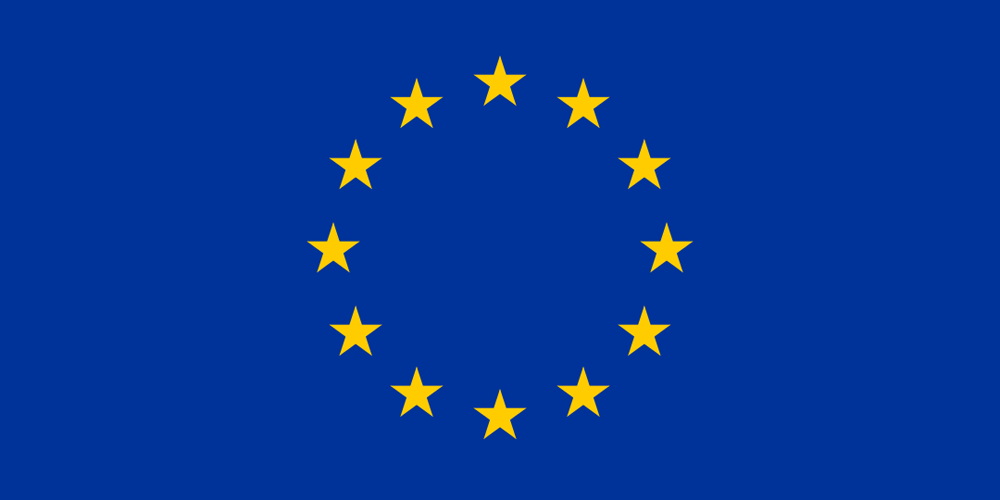Currency in Monaco: EUR Send & Spend FX Guide
 Resources for Expats, Travelers and Entrepreneurs Navigating Life and Trade in Monaco with the Euro.
Resources for Expats, Travelers and Entrepreneurs Navigating Life and Trade in Monaco with the Euro.

What's in this Monaco currency guide?
What currency is used in Monaco?
The official currency of Monaco (country code: MC) is the Euro, with symbol € and currency code EUR.
What is a good Euro exchange rate?
The BestExchangeRates.com currency comparison table below helps you see the total cost of your currency transaction by showing the exchange rates offered by different providers. It also makes it easy to spot potential savings from market-leading FX services compared to bank rates.
To see a full list of rates, enter your transaction type, currencies and amount then click ‘GET RATES’:
Loading rates...
|
|
|
Good things to know about the Euro
As of June 16, 2025, the Euro (EUR) has experienced notable developments affecting travelers, expats, and business owners:
- Interest Rate Adjustments: The European Central Bank (ECB) has reduced its key interest rates multiple times since April 2025, with the deposit rate now at 2%. This easing cycle aims to stimulate economic growth amid global uncertainties. (ft.com)
- Inflation Trends: Eurozone inflation has moderated, with the latest data showing a decrease to 2.4% in November 2024, bringing it closer to the ECB's 2% target. (nbcdfw.com)
- Eurozone Expansion: Bulgaria is on track to adopt the euro on January 1, 2026, following successful convergence assessments. This expansion may influence currency dynamics and economic interactions within the euro area. (en.wikipedia.org)
These developments are crucial for individuals and businesses engaged in international transactions, as they can impact exchange rates, purchasing power, and overall economic conditions.
For more EUR information check out our selection of Euro news and guides.
Frequently Asked Questions
What currency should I use in Monaco?
The domestic currency in Monaco is the Euro.
What is the Euro currency code and symbol?
The three letter currency code for the Euro is EUR — symbol is €.
What does the Euro look like?
Here is an example Euro banknote:

Which countries use the Euro?
It is the domestic currency in Eurozone, Aaland Islands, Andorra, Austria, Belgium, Croatia, Cyprus, Estonia, Finland, France, French Guinea, French Southern Territories, Germany, Greece, Guadeloupe, Vatican City, Ireland, Italy, Latvia, Lithuania, Luxembourg, Malta, Martinique, Mayotte, Monaco, Montenegro, Netherlands, Portugal, Reunion, Saint Barthelemy, Saint Martin, Saint Pierre and Miquelon, San Marino, Slovakia, Slovenia and Spain.
Is the Euro a closed currency?
No, the Euro is freely available and convertible. See guide: What is a closed currency?
What are equivalent amounts of USD and EUR?
Here are some popular conversion amounts for USD to EUR (US dollar to Euro)*.
*Converted at the current USDEUR interbank exchange rate. Calculate actual payout amounts for Send Money and Travel Money exchange rates.

Travel money for Monaco
Using Wise for Euro travel money is a smart choice for savvy travelers. With its competitive exchange rates and low fees, Wise allows you to convert and manage multiple currencies effortlessly.
Be careful when using your own bank's Debit/Credit Card, as your bank may also charge an extra 3% as an “Overseas Transaction Charge” plus “Overseas ATM” fees for withdrawing cash on top of the standard Visa/Mastercard 2.5% from market mid-rate.
For card purchases, if you are offered a choice of currencies always select to Pay in Euro otherwise you will typically get much worst dynamic currency conversion (DCC) exchange rates.
If you really want Euro cash before departure, you can save money by ordering online. You generally get better rates and can pick up the EUR cash locally or even on travel day at the airport.
Monaco: Travel Guide
Traveling to Monaco requires careful financial planning to ensure a smooth and cost-effective experience. Here's a comprehensive guide to help you navigate currency considerations and manage your money effectively during your visit.

Welcome to the opulent principality of Monaco, a playground for the world's elite and a haven for luxury experiences. Whether you're planning to try your luck at the Casino de Monte-Carlo, attend the Grand Prix, or soak in the Mediterranean sun, here's a handy money guide for your visit.
1. Currency:
Official Currency: Euro (€, EUR).
2. Cash or Card:
Credit/Debit Cards: Monaco is very card-friendly. Most establishments, from luxury boutiques to restaurants, accept major international credit and debit cards. Visa and MasterCard are most widely accepted, but many places also accept American Express.
Cash: While card payments are prevalent, it's a good idea to have some cash for smaller establishments, tips, or unexpected needs. ATMs are widely available.
3. Budgeting:
Luxury Traveler (€500+/day): Stay in plush hotels like Hôtel de Paris, dine in Michelin-starred restaurants, and indulge in exclusive experiences.
Mid-Range Traveler (€200-€500/day): Enjoy comfortable hotels, dine in good restaurants, and partake in activities like yacht tours.
Budget Traveler (€100-€200/day): While Monaco is renowned for luxury, budget travelers can find some more affordable accommodation options and eateries, especially if booked in advance.
4. Tipping:
Tipping is not mandatory in Monaco, but it's appreciated for good service. A tip of around 5-10% at restaurants is customary for excellent service. For services like taxis, rounding up the fare is a polite gesture.
5. Banking and ATMs:
Monaco has a range of local and international banks. ATMs are abundant and easy to locate. Ensure you're aware of transaction fees your bank might charge for international withdrawals.
6. Exchanging Money:
It's advisable to exchange a small amount of money before you arrive. However, you'll find numerous currency exchange offices in Monaco. Note: It's usually more economical to withdraw money from an ATM than to exchange cash.
7. VAT Refund:
If you're a resident outside of the EU, you may be eligible for a VAT refund on significant purchases when you leave the EU. Ask retailers about "Tax-Free Shopping" and ensure you get the necessary documentation.
8. Scams and Safety:
Monaco is one of the safest places globally, with a very low crime rate. However, as with any tourist destination, be cautious and aware of your surroundings. Always ensure your belongings, especially in crowded areas.
9. Prices:
Coffee: €4-€10
Meal at a mid-range restaurant: €30-€70
Luxury dining experience: €150+
Public transport ticket: €2
Museum Entry: €10-€15
10. Final Tips:
Inform your bank of your travel dates to ensure uninterrupted card service.
While Monaco is synonymous with luxury, deals and value offers can be found if you research and book in advance.
If attending major events like the Grand Prix, it's advisable to book accommodation and services well in advance, as prices can surge.
Monaco, with its blend of glamour and Mediterranean charm, offers a unique travel experience. A little planning regarding your finances can ensure a smooth and delightful stay in this sun-kissed principality. Safe travels!

Everyday Costs in in Monaco
How much does it really cost to live, work, or travel in Monaco? Here's what to expect for daily expenses and expat living.
Currency Guide: Monaco (ISO Code: MC)
For a week-long mid-range stay in the stunning Monopoly known as Monaco, travelers should budget around €1,500 to €2,000, taking into account accommodation, meals, and activities. Here’s a quick breakdown of typical daily expenses in Euros (€) that can help you plan:
- 🍽️ Meal at a local restaurant: €25-€50
- ☕ Coffee: €3-€5
- 🚍 Public transport fare: €1.50
- 📱 Prepaid SIM card: €15-€30
- 🛏️ Budget hotel or Airbnb: €100-€200 per night
Overall, Monaco is generally considered an expensive destination, particularly in comparison to the United States, where mid-range dining and accommodation costs are typically lower. In the UK, costs are also fairly comparable, though Monaco’s luxurious offerings can quickly ramp up your budget. However, if you're looking for a glimpse of extraordinary Mediterranean opulence, the investment might just be worth it.
For Expats in Monaco
For expats living in Monaco, understanding the cost of living is essential for effective budgeting. Monthly living expenses can vary widely but generally fall around €3,500 to €4,500 depending on lifestyle choices and housing preferences. This estimate includes rent for a modest one-bedroom apartment, utilities, groceries, and leisure activities.
When it comes to financial management, using local banking services is advisable due to the favorable financial climate, but remember to consider using international cards that avoid hefty transaction fees. Services like Wise and OFX often offer better exchange rates with lower fees than local exchanges. Particularly for sending or receiving larger sums, these services can save you significant money compared to traditional banks. In general, using local ATMs can yield the best rates, but make sure to opt for withdrawal in local currency to dodge extra charges.
USD/EUR Market Data
The below interactive chart displays the USD/EUR change and UP📈 DOWN📉 trends over the past 1 Year.

Recent Euro Market News
December 22, 2025
Key Developments Affecting the Euro (EUR):
1. ECB Maintains Interest Rates Amid Modest Growth: On December 18, 2025, the European Central Bank (ECB) kept interest rates unchanged for the fourth consecutive meeting, citing signs of modest economic growth across the eurozone. ECB President Christine Lagarde emphasized caution due to global uncertainties and indicated that future rate adjustments would be considered on a meeting-by-meeting basis. (apnews.com)
2. Bulgaria's Eurozone Entry Approved: On July 8, 2025, the Council of the European Union approved Bulgaria's accession to the eurozone, effective January 1, 2026. This decision marks Bulgaria's transition from the Bulgarian lev to the euro, making it the 21st member state of the eurozone. (en.wikipedia.org)
3. Digital Euro Project Advances: The European Central Bank (ECB) is progressing with the digital euro project, aiming to introduce a central bank digital currency (CBDC) by 2029. This initiative seeks to provide a fast and secure electronic payment instrument to complement existing euro forms. (en.wikipedia.org)
4. Eurozone Economic Forecasts: The European Commission's Spring 2025 Economic Forecast anticipates a decrease in headline inflation from 2.4% in 2024 to 2.1% in 2025, with underlying price pressures remaining consistent with the ECB's target. The forecast also projects a neutral fiscal stance for 2025 and 2026. (economy-finance.ec.europa.eu)
ECB Holds Steady on Rates Amidst Global Uncertainty:
- European Central Bank leaves rates unchanged with economy showing signs of modest growth, Published on Thursday, December 18
For more EUR information read our News and guides to the Euro.
Send Money to Monaco - Best Rates
To get a good (and fair) exchange rate when sending money to Monaco you need to find and compare exchange rates for International Money Transfers (IMTs).
The available FX rates for sending money abroad can be very different to the mid-market (wholesale) rate which you see reported online and in the News.
You should especially compare your own bank's exchange rates to those available from Money Transfer specialists to see how much you can save - we make that calculation easy in the below table.
Get a better deal for foreign transfers to Monaco
When sending money to Monaco it’s important to compare your bank’s rates & fees with those we have negotiated with our partner money transfer providers. To get a better deal you should follow these 4 simple steps :
- Open an account with a BER reviewed FX provider (id docs may be required)
- You specify the local or Euro amount you want to transfer
- Make a local currency domestic transfer for the requested amount to the provider's bank account in your country
- Once your funds are received by the provider the converted EUR amount will be transfered to the recipient account you specify in Monaco.
Use the above calculator to compare the exchange rates of FX specialist providers rates versus your bank's standard rates you can hopefully save around 5% and maybe more - end result is more Euro deposited into the recipient bank account and less margins and fees kept by the banks!

Managing money while living and working in Monaco
Managing your money effectively while living and working abroad can be challenging, but there are several steps you can take to ensure that your finances are in order.
Understand Euro currency exchange rates: Exchange rates can have a big impact on your finances, so it is important to keep an eye on the EUR exchange rate and consider using a money transfer specialist or a credit card that does not charge foreign transaction fees to get the best exchange rate.
Use a local Euro bank account: A local EUR bank account can make it easier for you to manage your finances and pay bills while you are in Monaco. It may also be more convenient to use a local EUR bank account to make purchases and withdraw cash.
Research local laws and regulations: It is important to understand the local laws and regulations that apply to financial transactions in Monaco. This can help you avoid legal issues and ensure that you are complying with local requirements.
Consider the tax implications: It is important to understand the tax implications of living or doing business in Monaco. This can help you plan your finances and ensure that you are paying the correct amount of tax.
Seek financial advice: If you are unsure of how to manage your finances in Monaco, it is a good idea to seek the advice of a financial professional who is familiar with the local financial system. This can help you make informed decisions and avoid financial pitfalls.
We have put together some key points to help managing your money effectively, you can reduce financial stress and enjoy your experience living or doing business in Monaco.

Guide to Business and Expat Life in Monaco
Monaco, the glittering gem of the Côte d'Azur, is renowned for its opulence, casinos, Grand Prix, and as a haven for the world's wealthy elite. If you're considering a business venture or expat life in Monaco, here's a guide to navigating its unique landscape.
1. Business Climate:
Language: French is the official language. However, due to the international population, English, Italian, and other languages are commonly spoken, especially in business contexts.
Business Etiquette: Monaco's business community is formal and places significant importance on reputation. Networking is crucial, and building relationships can open many doors.
Economic Landscape: Monaco boasts a diverse economy with strong sectors in tourism, real estate, finance, and shipping.
2. Living in Monaco:
Accommodation: Space is at a premium in this tiny state. Property prices and rents are among the highest in the world, with luxurious apartments and penthouses dominating the market.
Cost of Living: Monaco is synonymous with luxury. While certain amenities can be pricey, the principality offers benefits like low taxes and high-quality services.
Healthcare: Monaco offers top-tier medical services. The healthcare system is modern, with well-equipped hospitals and clinics. It's advisable to have comprehensive health insurance.
Education: There are excellent schools, including the International School of Monaco, which offers an English language curriculum.
3. Culture & Lifestyle:
Local Culture: While Monaco is cosmopolitan, it retains a distinct Mediterranean culture, placing importance on family, leisure, and celebrations.
Cuisine: Reflecting its Mediterranean setting, Monegasque cuisine offers dishes like "barbajuan" (stuffed pastries) and "fougasse" (a nutty pastry). The culinary scene is diverse, with numerous fine dining options.
Entertainment & Leisure: From the famous Monte Carlo Casino to the Opera and the Grand Prix, Monaco offers world-class entertainment. Yachting and watersports are also popular.
4. Transportation:
Public Transport: Due to its small size, Monaco is easily walkable. However, there are regular bus services and a boat-bus.
Driving: Given the compact nature of Monaco, traffic can be dense. Parking spaces are limited and often expensive.
5. Networking:
Expat Groups: Monaco's expat community is active, with various clubs and organizations catering to diverse interests.
Local Partnerships: Building connections with local businesses and attending events, such as the Monaco Yacht Show, can be instrumental in establishing oneself professionally.
6. Challenges:
Space Constraints: Everything in Monaco is compact, from available land to parking spaces.
Entry Barriers: High living costs and stringent residency requirements can be obstacles for some.
7. Safety:
- Monaco is one of the world's safest countries with a high police presence and advanced security measures.
8. Residency & Business Regulations:
- To live in Monaco, one needs to apply for a residence permit, which requires opening a local bank account and proving financial self-sufficiency.
- For business, there are various legal structures to choose from, with specific regulations and benefits for each.
Conclusion:
Monaco offers an unmatched blend of luxury, security, and business opportunities. While it presents certain challenges, such as its high cost of living, the benefits of networking, tax advantages, and lifestyle often make it an attractive destination for expats and business professionals. Thorough preparation and local guidance are key to successfully integrating into Monegasque life.
